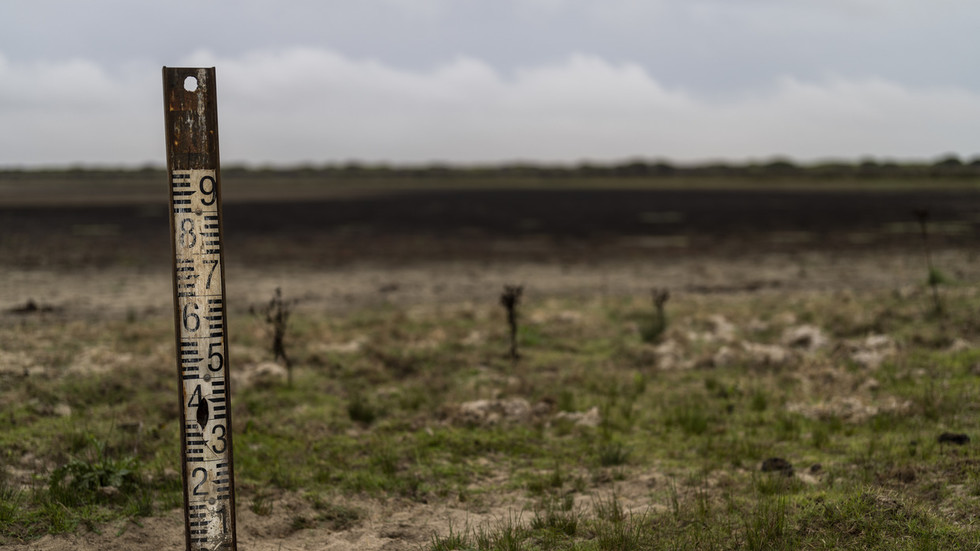
A study has found that in the worst case scenario, Earth could lose nearly one third of its species by 2100

A water meter stands in a dry wetland in Donana natural park, Spain, October 19, 2022 © AP / Bernat Armangue
Pollution, climate change and depleting resources could drive up to 27% of the world’s animal life to extinction, a new paper has claimed. The study used a supercomputer to map out how interdependent food chains could collapse in the coming decades.
Published on Friday and authored by European Commission scientist Giovanni Strona and Professor Corey Bradshaw of Flinders University in Australia, the study presented a series of increasingly grim scenarios. The researchers claimed that the magnitude of the coming extinctions will depend largely on how much carbon mankind emits over the coming century.
A best-case scenario would see ecosystems lose 6% of their vertebrate species by 2050 and 13% by 2100, they claimed, while a worst-case outcome would see 10.8% of vertebrates wiped out by 2050 and 27% eliminated by 2100.

Read more
The scientists reached this figure by creating a “virtual earth,” populated by more than 15,000 “food webs” – complex relationships of plants, pollinators, predators, prey and parasites. With these species dependent on each other for food, the loss of one could lead to the collapse of an entire ecosystem.
A supercomputer scaled up these relationships to a global level, filled in missing data with fictional species, and simulated the effects of climate change on this virtual world. The computer also accounted for the impact of over-exploitation of resources, changes in land use and migration of species.
However, the researchers conceded that as it is based on a fictional version of our planet, their model “cannot forecast Earth’s future” with complete accuracy. Instead it describes a “realistic” future on an “ecologically plausible Earth.”
The paper’s release coincided with the UN’s COP15 biodiversity conference in Canada. On Monday, more than 190 countries at the conference approved an agreement to declare 30% of the planet as a protected zone by 2030 and to raise $30 billion per year for conservation in the developing world.




